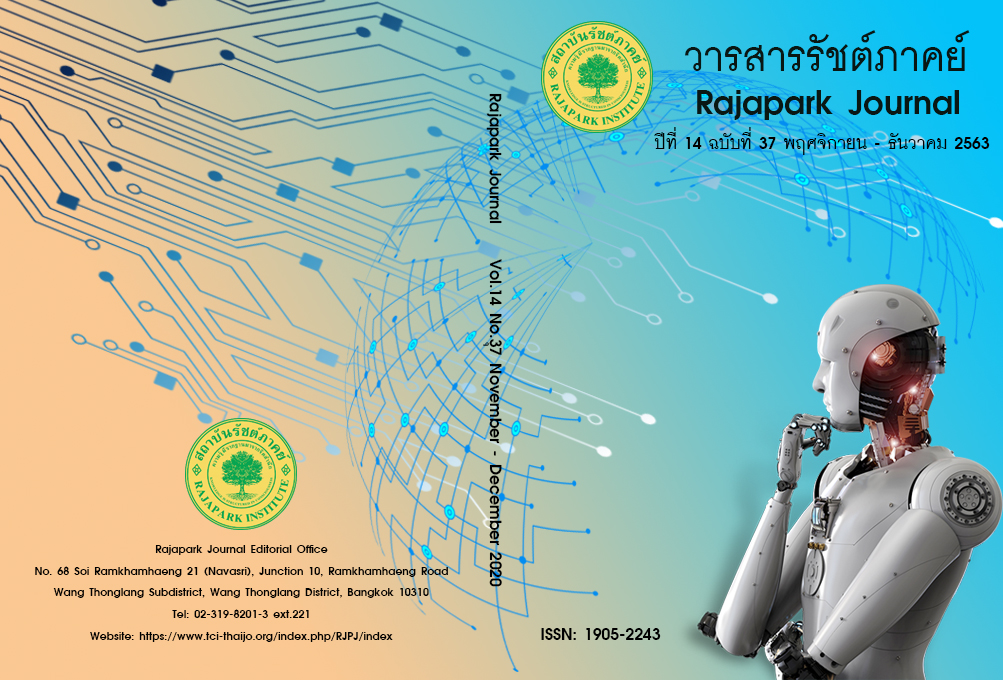Level of Contingencies of Self-Worth: Particular Effect on Academic Performance in Pre-service Teacher
Main Article Content
Abstract
To enhance the understanding on academic performance development in pre-service teacher that related to the level of contingencies of self-worth. The purposes of this study were to analyze the relationship of the indicators that contribute to academic performance with the contingencies of self-worth, and to analyze the gender differ in pre-service teachers’ level of contingencies of self-worth. The total of 158 samples were students in educational program, faculty of education at Lampang Rajabhat University. The instrument of this study was the Thai version of the Contingencies of Self-Worth scale and also ask for the demographic include gender, program, and academic performance. Data were analyzed by using multiple linear regression. The result of this study was that the academic performance regression model was a significant fit of the data overall at the .05 level of significance. The significant predictors of academic performance, which the predictor was making a significant contribution to the model, were family support and academic competence. Level of contingencies of self-worth in female were significantly higher than male at the .05 level of significance in family support, academic competence, competition, and approval from others sub-scale.
Article Details
Views and opinions appearing in the Journal it is the responsibility of the author of the article, and does not constitute the view and responsibility of the editorial team.
References
Coopersmith, S. (1981). Self-Esteem Inventories. Palo Alto: Consulting Psychologist Press.
Covington, M. V. (1984). The self-Worth Theory of Achievement Motivation: Findings and Implications. The Elementary School Journal, 85(1), 4-20.
Crocker, J., Luhtanen, R. K., Cooper, M. L., & Bouvrette, A. (2003). Contingencies of Self-Worth in College Students: Theory and Measurement. Journal of Personality and Social Psychology, 85(5), 894–908.
Crocker, J., Luhtanen, R. K., & Sommers, S. R. (2004). Contingencies of Self-Worth: Progress and Prospects. European Review of Social Psychology, 15(1), 133–181.
Crocker, J., & Wolfe, T. C. (2001). Contingencies of Self-Worth. Psychological Review, 108(3), 593–623.
Geng, L., & Jiang, T. (2013). Contingencies of Self-Worth Moderate the Effect of Specific Self-Esteem on Self-Liking or Self-Competence. Social Behavior and Personality, 41(1), 95–108.
Gettinger, M., & Seibert, J. K. (2002). Contributions of Study Skills to Academic Competence. School Psychology Review, 31(3), 350–365.
Giordano, A. L., Prosek, E. A., Reader, E. A., Bevly, C. M., Turner, K. D., Leblanc, Y. N., & Garber, S. A. (2015). Collegiate misuse of prescription stimulants: Examining differences in self- worth. Substance Use and Misuse, 50(3), 358–365.
Josephs, R. A., Markus, H. R., & Tafarodi, R. W. (1992). Gender and Self-Esteem. Journal of Personality and Social Psychology, 63(3), 391–402.
Ministry of Education. (2008). Guideline for learning outcome evaluation. Bangkok: Kurusapa Printing Ladphrao.
Orth, U., & Robins, R. W. (2014). The Development of self-esteem. Current Directions in Psychological Science, 23(5), 381-387.
Park, L. E., Crocker, J., & Kiefer, A. K. (2007). Contingencies of self-worth, academic failure, and goal pursuit. Personality and Social Psychology Bulletin, 33(11), 1503–1517.
Sanchez, D. T., & Crocker, J. (2005). How investment in gender ideals affects well-being: The role of external contingencies of self-worth. Psychology of Women Quarterly, 29(1), 63–77.
Sargent, J. T., Crocker, J., & Luhtanen, R. K. (2006). Contingencies of self-worth and depressive symptoms in college students. Journal of Social and Clinical Psychology, 25(6), 628–646.
Wood, W., Christensen, P. N., Hebl, M. R., & Rothgerber, H. (1997). Conformity to sex-typed norms, affect, and the self-concept. Journal of Personality and Social Psychology, 73(3), 523–535.


